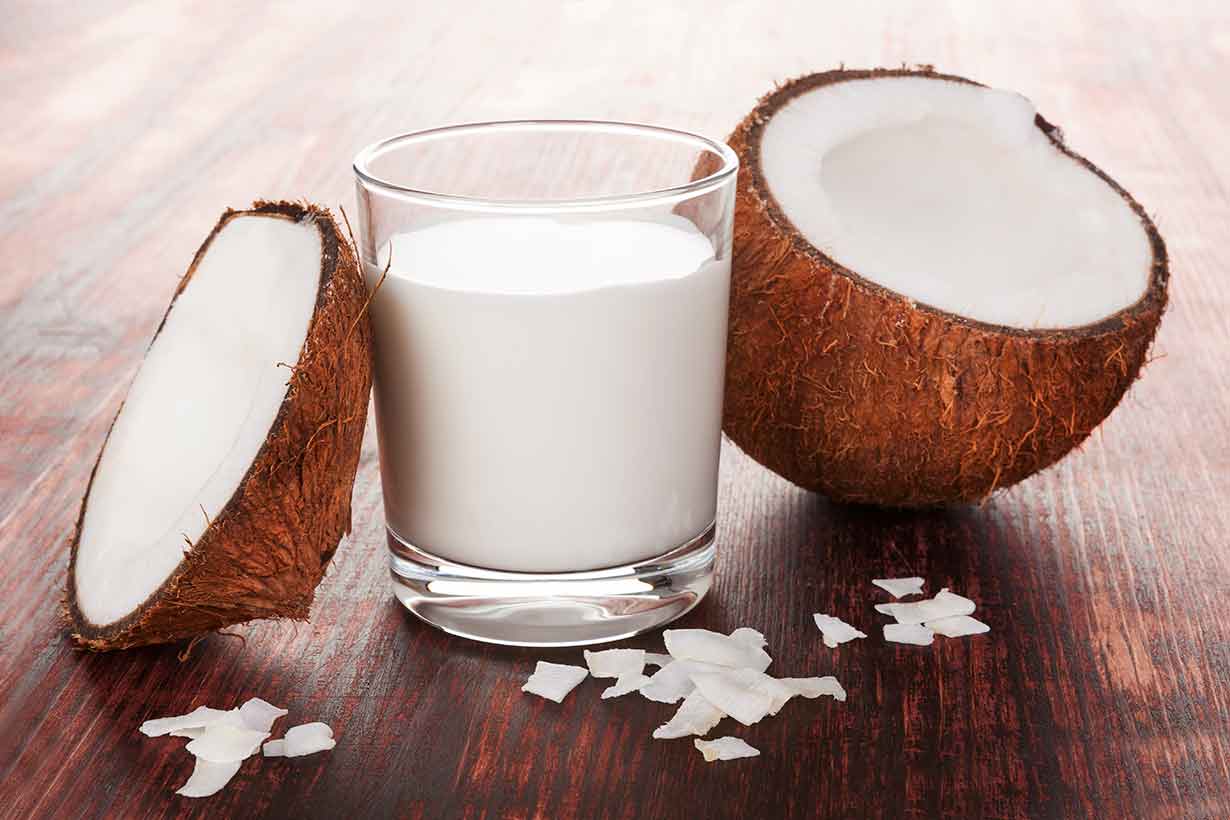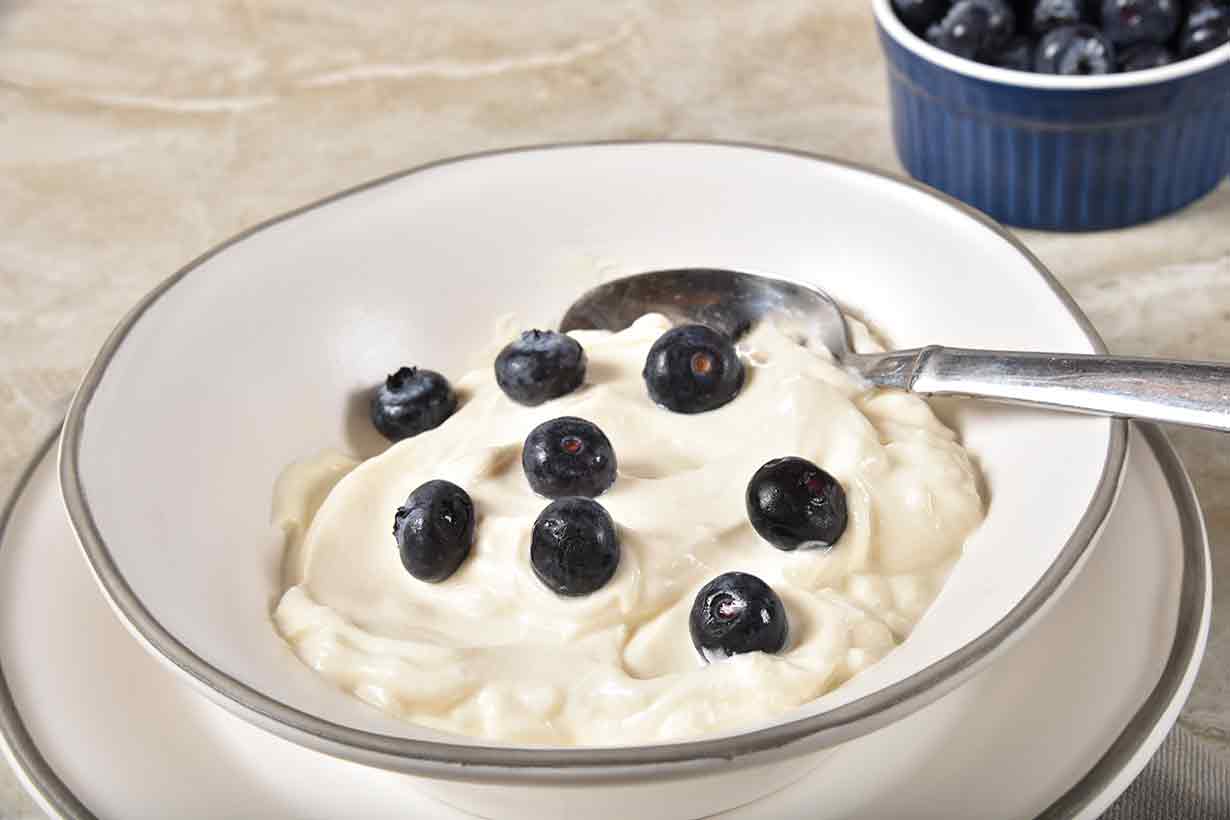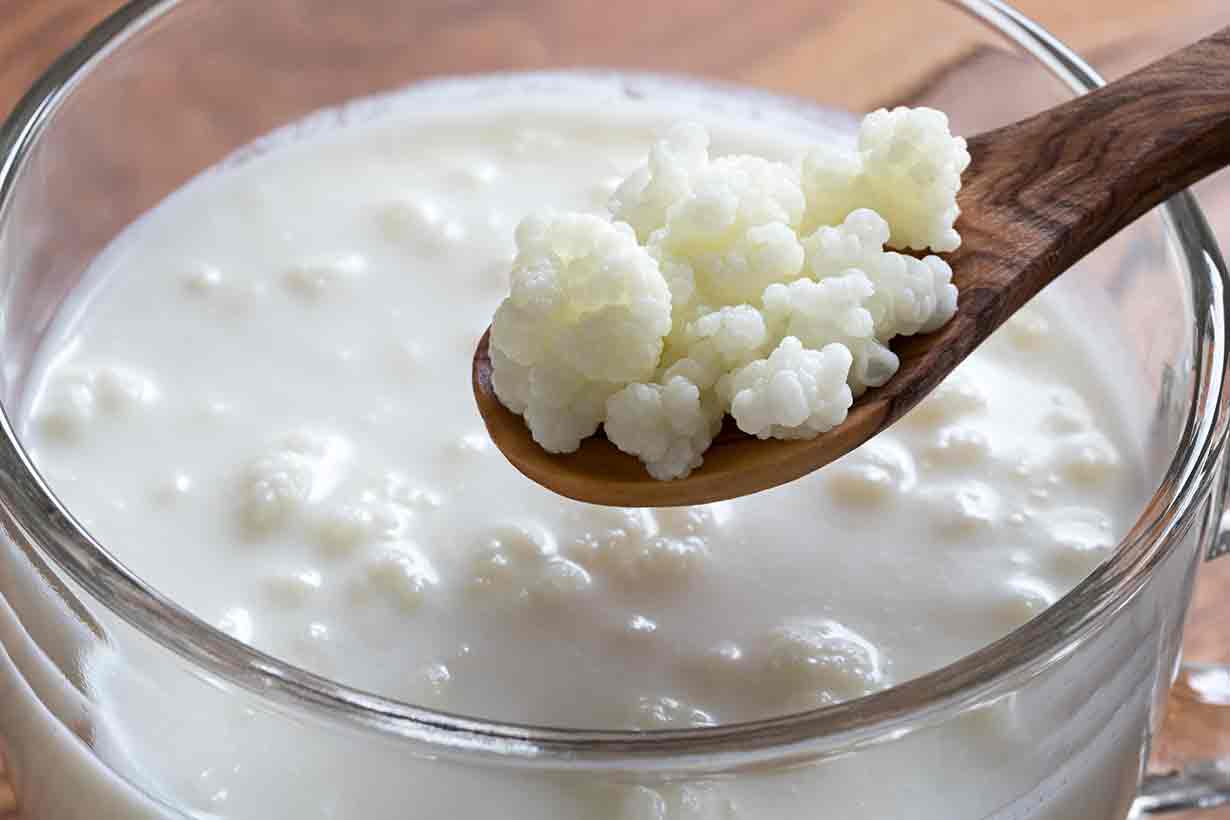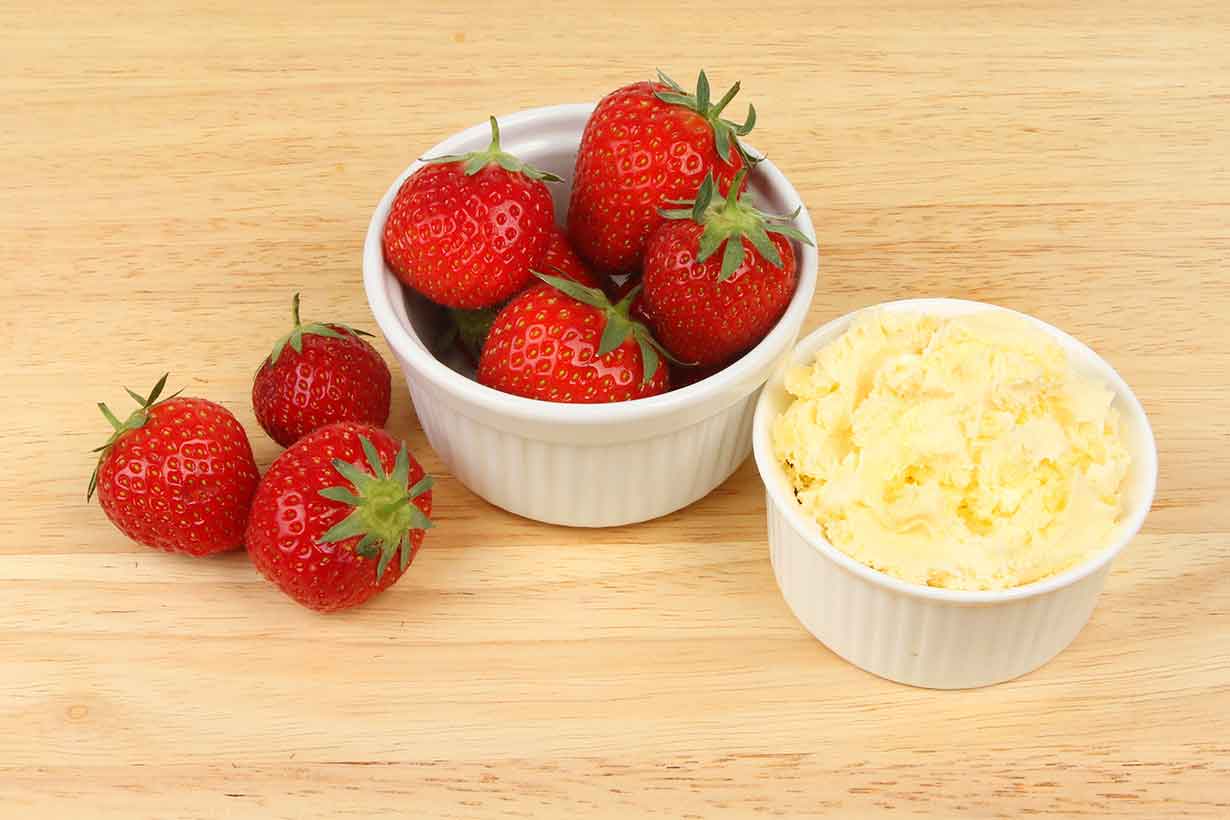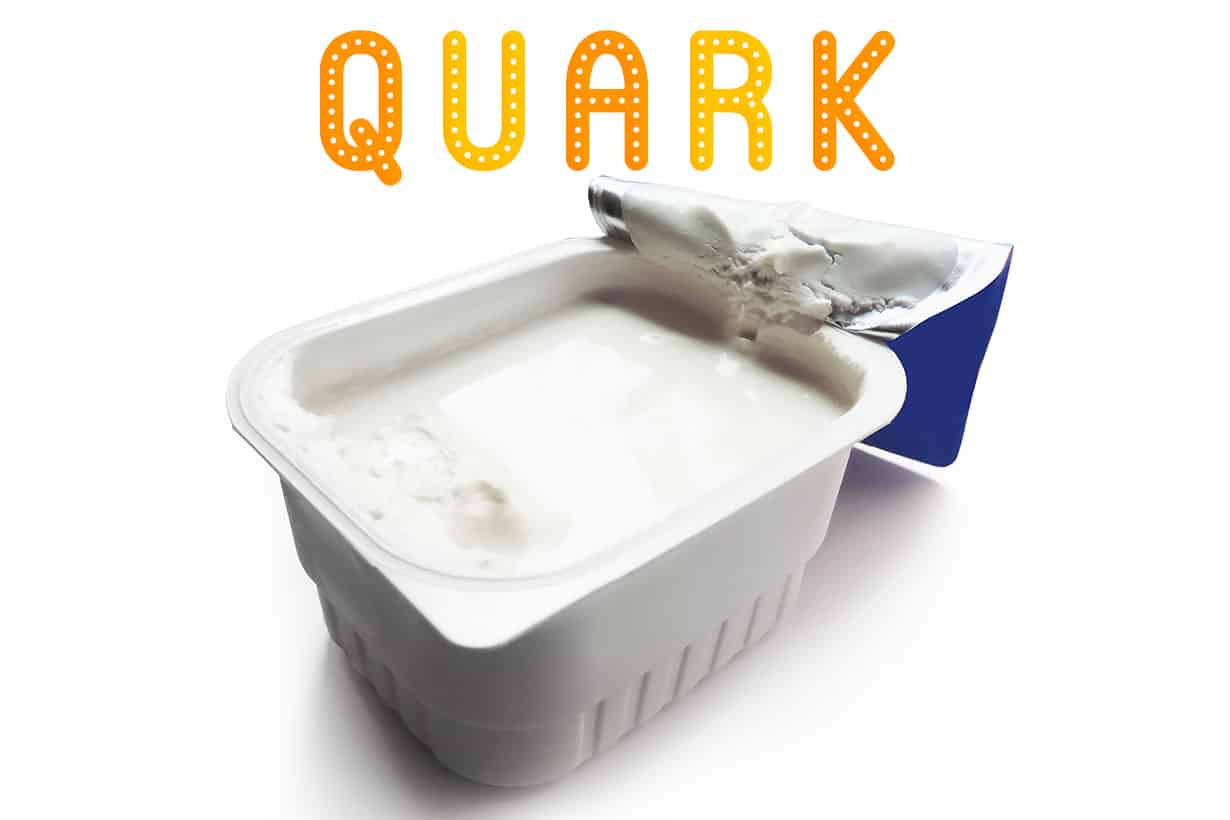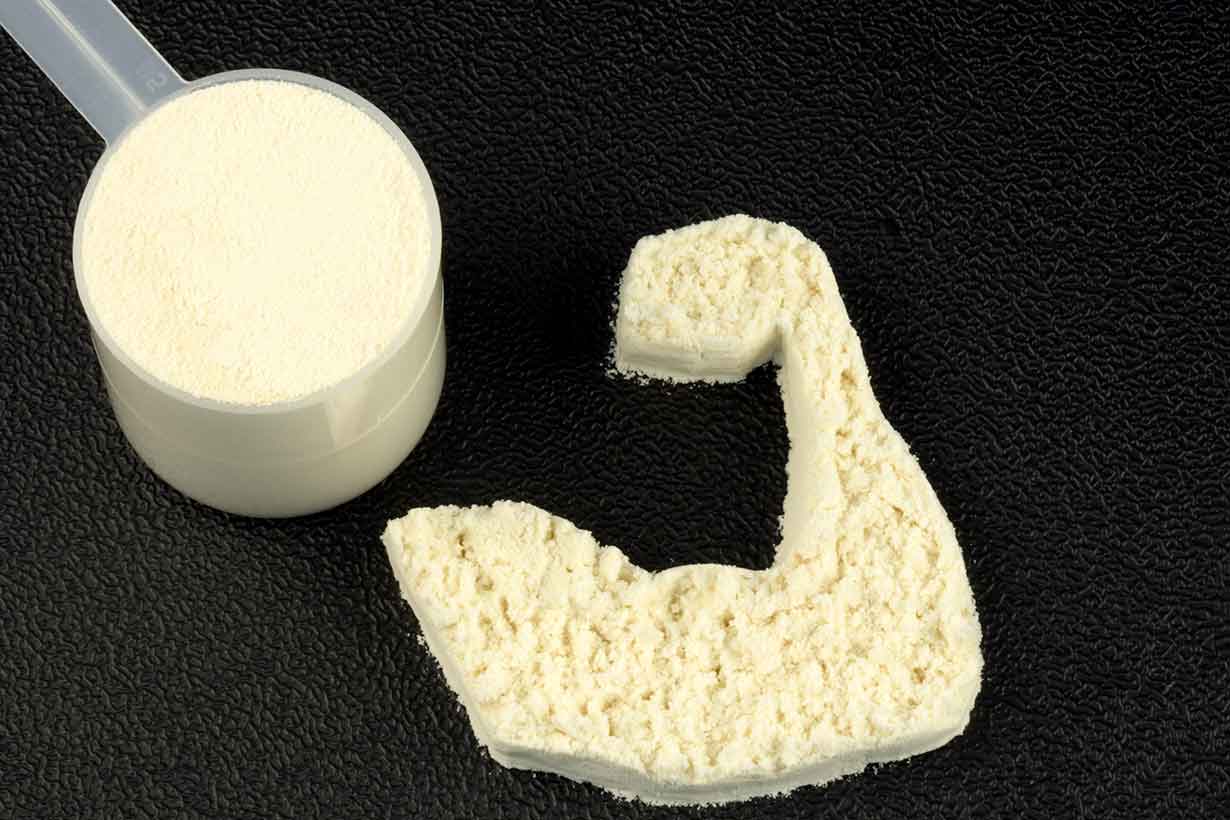Dairy is a global staple, but the great diversity of dairy products are often overlooked.
While dairy is one of the most common types of food, many people only stick to choices like butter, cheese, cream, milk, and yogurt.
But beyond these foods, there is a broad range of distinct dairy options, offering a unique range of choices to explore.
In this article, we examine the nutritional values and key characteristics of dairy products from around the world.
Table of contents
What Are Dairy Products?
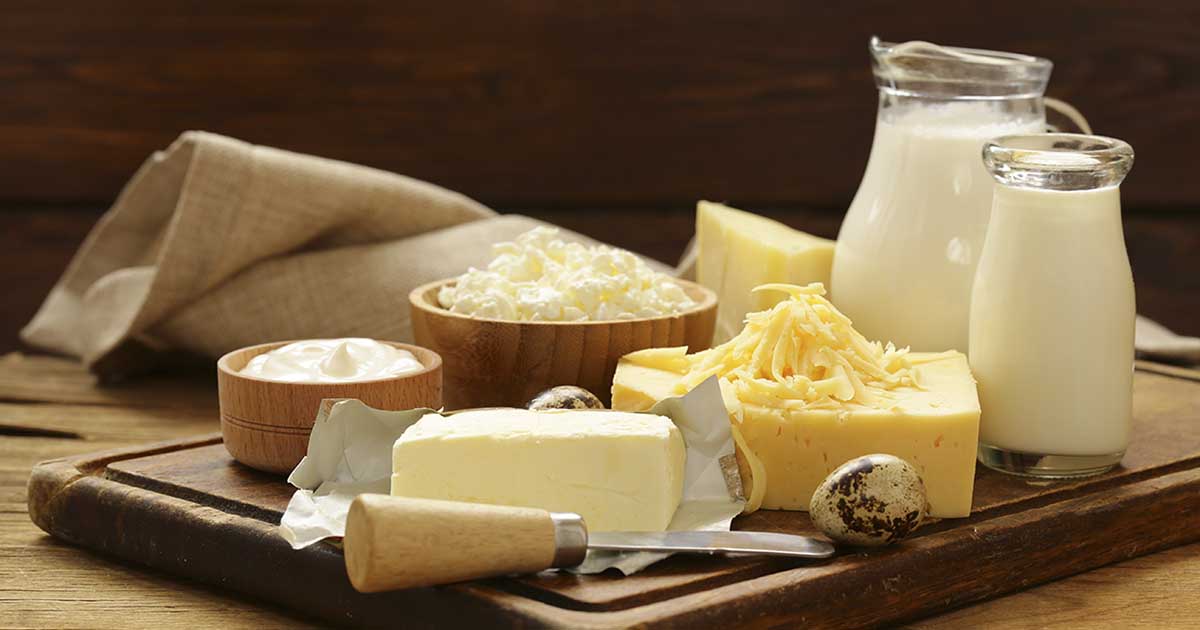
Dairy products can be defined as food products made from milk. This milk may come from various animals, including cows, goats, sheep, buffalo, and in some countries, even camels and yaks (1).
However, the majority of popular dairy foods use cow’s milk.
Common dairy foods such as milk, cheese, and yogurt play a significant role in the typical diet of many nations.
Some people may avoid or limit their consumption of dairy products due to milk allergies, lactose intolerance, or ethical beliefs, such as veganism (2, 3, 4).
Benefits of Dairy Products
The main benefit of most dairy products is their significant and diverse nutrient content.
Aside from pure fat sources (such as butter), milk-based dairy foods contain high levels of protein, calcium, and phosphorus. They also supply numerous essential vitamins, including vitamin B12 (5).
Furthermore, observational studies demonstrate that dairy intake may protect bone health and help prevent fractures (6, 7).
This is likely because milk contains several nutrients thought to be important for bone health, including protein, calcium, and phosphorus (8, 9, 10).
Important note: Remember that “dairy” is a broad category, and some options offer more nutritional value than others.
Downsides of Dairy Products
There are several potential downsides of dairy products, which depend on the context of intake and the individual:
- Lactose intolerance and milk allergies: Dairy products like milk and may be unsuitable for individuals with lactose intolerance or a cow’s milk allergy (11, 12). However, hard, aged cheeses and pure fats, like butter and ghee, contain very little lactose and are usually well-tolerated.
- Sodium content: Some dairy products, such as hard-aged cheese, can contain a significant amount of sodium. While sodium is an essential mineral, high intakes of cheese may push someone over the recommended daily value for sodium, which is 2300 mg daily (13). High sodium intake levels can lead to elevated blood pressure (14).
- Saturated fat: Some dairy foods, such as butter and ghee, are significant sources of saturated fat. The Dietary Guidelines for Americans recommend limiting saturated fat intake to 10% of total energy, which is around 22 grams for a 2000-calorie diet (15). Diets high in saturated fat can increase low-density lipoprotein cholesterol (LDL-C) and apolipoprotein B (Apo-B) levels, which are associated with an increased risk of cardiovascular disease (16, 17).
Types of Dairy Products
While most of us are familiar with common dairy foods like milk and yogurt, there are many lesser-known options worldwide.
These typically fall into one of nine major categories:
- Butter and pure fats
- Cheese: Numerous varieties encompassing fresh, soft, and hard cheese.
- Condensed and evaporated dairy: Concentrated milk products that have had water removed.
- Cream-based dairy products: Liquid creams and whipped cream products.
- Dried products: Dried milk products and protein powders.
- Fermented dairy foods: Foods fermented using bacterial cultures.
- Frozen dairy products: A variety of frozen dairy products, such as ice-cream.
- Milk: Milk and milk-based products.
- Specialty dairy foods: Foods formulated to offer specific nutritional attributes, such as ‘high protein’ products.
Note: While cheese is a fermented dairy product, it encompasses a wide range of different products with distinct production processes, so it has its own category.
In the following sections, you will find a categorized list of dairy products, alongside each food’s characteristics and basic nutritional values.
Data sources: All nutritional data, unless otherwise stated, is sourced from the USDA database (18). Percent daily values (% DV) are based on a typical 2,000 calorie diet (13). We have tried to provide nutritional data based on standard serving sizes where available.
Butter and Pure Fats
1. Butter
Category: Butter and pure fats
Butter is a high-fat dairy food made from churned milk or cream, commonly used as a spread, in baking, and for pan-frying.
However, butter is easy to over-consume and is relatively high in saturated fat (19). Therefore, it is important to stick to recommended serving sizes.
While butter contains some nutritional value, particularly vitamins A and D, it is not particularly nutrient-rich.
One tablespoon (14.2g) of unsalted butter provides the following nutrients (19):
| Nutrient | Amount | % Daily Value |
|---|---|---|
| Calories | 102 kcal | |
| Carbohydrates | 0.01 g | 0% |
| Fiber | 0 g | 0% |
| Sugars | 0.01 g | |
| Fat | 11.5 g | 15% |
| Saturated Fat | 7.17 g | 36% |
| Protein | 0.12 g | <1% |
| Cholesterol | 30.5 mg | 10% |
| Sodium | 1.56 mg | <1% |
Learn more: Is Butter a Healthy Choice?
2. Ghee
Category: Butter and pure fats
Ghee is a traditional Indian food with origins going back centuries.
It is a higher-fat, richer, and creamier version of butter, and it is renowned for its great taste.
Making ghee is relatively straightforward and involves gently simmering butter on the stove until the milk solids (proteins and sugars) separate and can be strained out. This results in a clarified butter that solidifies as it cools.
Compared to regular butter, ghee is less likely to burn during cooking because it lacks the milk solids and sugars.
Here is the nutritional profile of ghee per 14-gram tablespoon serving (20):
| Nutrient | Amount | % Daily Value |
|---|---|---|
| Calories | 123 kcal | |
| Carbohydrates | 0 g | 0% |
| Fiber | 0 g | 0% |
| Sugars | 0 g | |
| Fat | 13.9 g | 18% |
| Saturated Fat | 8.67 g | 43% |
| Protein | 0.04 g | <1% |
| Cholesterol | 35.8 mg | 12% |
| Sodium | 0.28 mg | <1% |
Learn more: What Is Ghee and Is It a Healthy Cooking Fat?
Cheese
3. Cheese
Category: Cheese
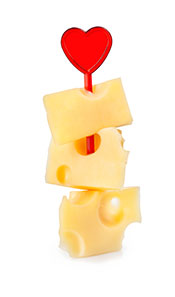
Cheese is a fermented dairy product that comes in different shapes and sizes. While some cheeses are hard with a strong flavor, others can be mild and soft.
Interestingly, despite being a source of saturated fat, systematic reviews of observational studies consistently show cheese as being neutral or inversely associated with cardiovascular risk (21, 22, 23).
Cheese is generally an excellent source of protein, and its fat content varies depending on the type.
Since it is one of the most popular cheese varieties, here are the nutritional values for Cheddar cheese per ounce (28.35g) slice (24):
| Nutrient | Amount | % Daily Value |
|---|---|---|
| Calories | 115 kcal | |
| Carbohydrates | 0.60 g | <1% |
| Fiber | 0 g | 0% |
| Sugars | 0.08 g | |
| Fat | 9.46 g | 12% |
| Saturated Fat | 5.43 g | 27% |
| Protein | 6.78 g | 13% |
| Cholesterol | 27.7 mg | 9% |
| Sodium | 180 mg | 8% |
Learn more about cheese: 49 Types of Cheese and Their Nutrition Facts
4. Cottage Cheese
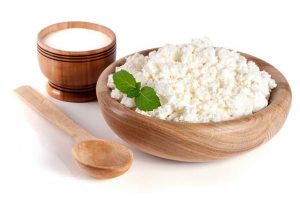
Category: Cheese
Cottage cheese is a high-protein, curd-based cheese with a mild yet slightly sour taste.
One of the best aspects of cottage cheese is its exceptional protein density, which is especially true of the low-fat variants.
For example, 2% milkfat cottage cheese is low in calories, carbohydrates, and fat, while providing over 12 grams of protein per 100 grams (25).
This high protein content makes it an excellent option for anyone looking to increase their protein intake, making it popular among bodybuilders and dieters.
Here is the full nutrition profile for a 220-gram cup of 2% milkfat cottage cheese (25):
| Nutrient | Amount | % Daily Value |
|---|---|---|
| Calories | 180 kcal | |
| Carbohydrates | 9.48 g | 3% |
| Fiber | 0 g | 0% |
| Sugars | 9.02 g | |
| Fat | 5.06 g | 6% |
| Saturated Fat | 2.77 g | 14% |
| Protein | 24.2 g | 48% |
| Cholesterol | 26.4 mg | 9% |
| Sodium | 706 mg | 31% |
Learn more: Is Cottage Cheese Healthy? (and Full Nutrition Facts)
5. Cream Cheese
Category: Cheese
Cream cheese is a popular, soft, and spreadable cheese made from milk and cream.
It has many uses in the kitchen and features prominently in recipes ranging from cheesecakes to baked potatoes.
However, it is worth noting that many different cream cheese brands exist, each with different nutritional profiles.
Some are made solely from full-fat cheese with a touch of salt, while others offer lower fat or high-protein levels.
Here are the nutritional values for full-fat cream cheese per ounce (28.35g) serving (26):
| Nutrient | Amount | % Daily Value |
|---|---|---|
| Calories | 84 kcal | |
| Carbohydrates | 0.99 g | <1% |
| Fiber | 0 g | 0% |
| Sugars | 0.99 g | |
| Fat | 8.11 g | 10% |
| Saturated Fat | 5.1 g | 26% |
| Protein | 2.01 g | 4% |
| Cholesterol | 25.5 mg | 9% |
| Sodium | 124 mg | 5% |
Learn more: Cream Cheese: Is It a Healthy Choice?
6. Quark
Category: Cheese
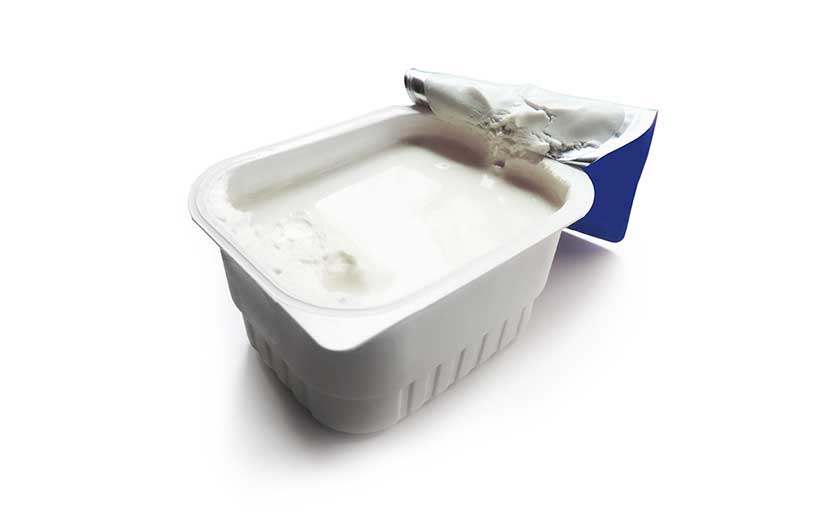
Originating in Germany, quark is a soft fermented cheese known for its high protein content.
While popular in Northern and Central Europe, quark is not as widely known in the United States. It is a kind of curd cheese that shares some nutritional similarities with cottage cheese.
Quark has a mild and slightly creamy taste with slightly sour notes. However, flavored and sweetened quark products are also available, which can significantly differ in taste.
Since quark’s production typically uses skim milk and lactic acid fermentation, the product is very low in fat and carbohydrates.
As a protein-rich dairy food, quark offers a convenient way to increase protein intake.
Based on data from the Finnish Food Composition Database, here are the nutritional values of <0.5% fat quark per 100 grams (27):
| Nutrient | Amount | % Daily Value |
|---|---|---|
| Calories | 59 kcal | |
| Carbohydrates | 3.0 g | 1% |
| Fiber | 0 g | 0% |
| Sugars | 3.0 g | |
| Fat | 0.4 g | 1% |
| Saturated Fat | 0.1 g | 1% |
| Protein | 9.8 g | 20% |
| Cholesterol | – | 0% |
| Sodium | 99.1 mg | 4% |
Learn more: Quark: What Nutritional Benefits Does It Provide?
7. Uunijuusto
Category: Cheese
This dairy product might just be the most difficult to pronounce.
Uunijuusto is a traditional baked dessert from Finland, made by mixing cow’s colostrum with salt and then baking it in the oven.
For those unfamiliar, colostrum refers to the first milk produced by a cow shortly after giving birth. Although the final product is purely baked milk, the name ‘uunijuusto’ translates to ‘oven cheese’ in English.
Uunijuusto has a unique nutritional profile due to its high colostrum content. However, the nutritional data for uunijuusto is unavailable in reputable nutrition databases.
Despite this, we can still gain insights into its nutritional composition from scientific research.
Colostrum is highly nutrient-rich, containing approximately 5x more protein than mature milk. It also has about half the carbohydrate content of regular milk, and it is about 7% fat by weight (28).
Condensed and Evaporated Dairy
8. Condensed Milk
Category: Condensed and evaporated dairy
Condensed milk is a milk product with a large proportion of its water content removed.
It typically contains added sugar for extra sweetness and is primarily used for baking, cooking, and making sweet drinks.
Since reducing the water content of milk concentrates the remaining nutrients, condensed milk is higher in calories and most nutrients than regular milk per gram.
Here is the basic nutritional profile of sweetened condensed milk per 1 fluid ounce (38.2g) serving (29):
| Nutrient | Amount | % Daily Value |
|---|---|---|
| Calories | 123 kcal | |
| Carbohydrates | 20.8 g | 8% |
| Fiber | 0 g | 0% |
| Sugars | 20.8 g | |
| Fat | 3.32 g | 4% |
| Saturated Fat | 2.1 g | 11% |
| Protein | 3.02 g | 6% |
| Cholesterol | 13 mg | 4% |
| Sodium | 48.5 mg | 2% |
9. Evaporated Milk
Category: Condensed and evaporated dairy
Evaporated milk is similar to condensed milk but is unsweetened, making it better suited for savory recipes like soups, stews, and sauces.
The following table displays the nutritional properties for evaporated milk per 31.5-gram (1 fluid ounce) serving (30):
| Nutrient | Amount | % Daily Value |
|---|---|---|
| Calories | 42 kcal | |
| Carbohydrates | 3.15 g | 1% |
| Fiber | 0 g | 0% |
| Sugars | 3.15 g | |
| Fat | 2.38 g | 3% |
| Saturated Fat | 1.45 g | 7% |
| Protein | 2.14 g | 4% |
| Cholesterol | 9.14 mg | 3% |
| Sodium | 33.4 mg | 1% |
Learn more: What Is Evaporated Milk? Nutrition, Benefits, and Uses
Cream-based Dairy Products
10. Clotted Cream
Category: Cream-based dairy products
Originating in England, clotted cream is seen as an indulgent and traditional accompaniment for afternoon tea and scones.
It is an extra thick, spreadable cream made by gently baking fresh heavy cream.
As the cream heats, it loses moisture and thickens, resulting in a higher fat content than regular cream.
According to the UK’s Food Standards Agency, clotted cream should have a minimum fat content of 55% fat (31).
Based on data from the Composition of foods integrated dataset (CoFID), here are the nutritional values for clotted cream per ounce (28.35g) serving (32):
| Nutrient | Amount | % Daily Value |
|---|---|---|
| Calories | 163 kcal | |
| Carbohydrates | 0.65 g | <1% |
| Fiber | 0 g | 0% |
| Sugars | 0.65 g | |
| Fat | 18.0 g | 23% |
| Saturated Fat | 11.25 g | 56% |
| Protein | 0.45 g | 1% |
| Cholesterol | 48.19 mg | 16% |
| Sodium | 5.10 mg | <1% |
Learn more: What Is Clotted Cream? Nutrition Facts & How To Use
11. Cream
Category: Cream-based dairy products
Cream is a high-fat dairy product consisting of the butterfat layer that naturally rises to the top of milk.
There are several varieties of cream, with fat content typically varying between 18% and 55%.
Like butter, cream provides a modest source of fat-soluble vitamins A and D. However, the way it tastes is typically the main reason people choose to consume cream.
On the negative side, cream contains a significant amount of saturated fat (and calories) and isn’t particularly nutrient-rich.
In other words, enjoy it in moderation.
Here is the full nutritional profile per tablespoon (15g) of heavy cream (33):
| Nutrient | Amount | % Daily Value |
|---|---|---|
| Calories | 51 kcal | |
| Carbohydrates | 0.43 g | <1% |
| Fiber | 0 g | 0% |
| Sugars | 0.43 g | |
| Fat | 5.42 g | 7% |
| Saturated Fat | 3.45 g | 17% |
| Protein | 0.43 g | 1% |
| Cholesterol | 17 mg | 6% |
| Sodium | 4 mg | <1% |
Learn more: Is Heavy Cream Healthy? (With Full Nutrition Facts)
12. Whipped Cream (Aerosol)
Category: Cream-based dairy products
Unlike regular cream, aerosol-based whipped cream typically contains a blend of ingredients, typically including sugar and emulsifiers—and it is mostly air.
However, cream is still the primary ingredient, making up about 95% of the product.
Whipped cream is typically used as a dessert topping or for topping milkshakes and milky coffee drinks.
Here are the nutritional values for a three-gram tablespoon serving of pressurized whipped cream (34):
| Nutrient | Amount | % Daily Value |
|---|---|---|
| Calories | 8 kcal | |
| Carbohydrates | 0.38 g | <1% |
| Fiber | 0 g | 0% |
| Sugars | 0.24 g | |
| Fat | 0.67 g | 1% |
| Saturated Fat | 0.41 g | 2% |
| Protein | 0.10 g | <1% |
| Cholesterol | 2.28 mg | 1% |
| Sodium | 0.24 mg | <1% |
Dried Dairy Products
13. Dried Milk
Category: Dried products
Dried milk is a dairy product produced by evaporating milk’s water content until a solid milk powder is left. This powder is typically used in bakery products, drinks, and dairy-based supplements.
It can also be mixed with water to make liquid milk quickly.
The specific nutritional profile of dried milk can vary depending on the type of milk it originates from. For instance, dried milk made from whole milk will have a comparatively higher fat and calorie content than skim milk powder.
Here are the basic nutritional properties of dried milk per quarter cup (32g) serving (35):
| Nutrient | Amount | % Daily Value |
|---|---|---|
| Calories | 159 kcal | |
| Carbohydrates | 12.3 g | 4% |
| Fiber | 0 g | |
| Sugars | 12.3 g | |
| Fat | 8.54 g | 11% |
| Saturated Fat | 5.34 g | 27% |
| Protein | 8.42 g | 17% |
| Cholesterol | 31 mg | 10% |
| Sodium | 119 mg | 5% |
14. Whey Protein
Category: Dried products
In recent years, whey has become one of the most popular dairy products as a concentrated and convenient protein source.
It offers a quick and easy way to boost protein intake, whether on the go, at the gym, or at home.
Whey is a by-product of the cheese-making process and provides a range of highly bioavailable amino acids.
Notably, whey protein boasts an incredibly high protein density, typically ranging from 70% to 90% by weight, depending on the product.
Here is the nutritional profile of a typical whey protein concentrate powder per 1/3 cup (32g) serving (36):
| Nutrient | Amount | % Daily Value |
|---|---|---|
| Calories | 113 kcal | |
| Carbohydrates | 2.0 g | 1% |
| Fiber | 0.99 g | 4% |
| Sugars | 0 g | |
| Fat | 0.50 g | 1% |
| Saturated Fat | 0.25 g | 1% |
| Protein | 25.0 g | 50% |
| Cholesterol | 5.12 g | 2% |
| Sodium | 49.9 mg | 2% |
Learn more: Whey Protein 101: Nutrition Facts, Benefits, and Drawbacks
Fermented Dairy Foods
15. Ayran
Category: Fermented dairy foods
Ayran is a salty yogurt drink made from three simple ingredients; yogurt, water and salt.
As a traditional dairy food from Turkey, Ayran is popular across the Middle East region.
While the drink is high in protein, calcium, and several other essential nutrients, it is very high in sodium. This is due to the large amounts of added salt, which is key to Ayran’s taste.
Based on data from My Net Diary, here are Ayran’s nutritional values per 8 fl oz (241g) serving (37):
| Nutrient | Amount | % Daily Value |
|---|---|---|
| Calories | 123 kcal | |
| Carbohydrates | 4 g | 1% |
| Fiber | 0 g | 0% |
| Sugars | 4 g | |
| Fat | 10 g | 13% |
| Saturated Fat | 6 g | 30% |
| Protein | 5 g | 10% |
| Cholesterol | 37 mg | 12% |
| Sodium | 861 mg | 37% |
Learn more: Ayran: A Uniquely Sour and Salty Dairy Drink
16. Buttermilk
Category: Fermented dairy foods
Buttermilk is not as famous as butter and milk, but it is a distinct, sour-tasting dairy product.
Traditionally, buttermilk is the pale-yellow liquid that remains after churning butter.
Most modern buttermilk products are fermented using a bacterial culture (such as Lactococcus lactis) and are known as cultured buttermilk.
Per 245-gram cup, buttermilk’s nutritional profile is as follows (38):
| Nutrient | Amount | % Daily Value |
|---|---|---|
| Calories | 152 kcal | |
| Carbohydrates | 12.0 g | 4% |
| Fiber | 0 g | 0% |
| Sugars | 12.0 g | |
| Fat | 8.11 g | 10% |
| Saturated Fat | 4.66 g | 23% |
| Protein | 7.86 g | 16% |
| Cholesterol | 27 mg | 9% |
| Sodium | 257 mg | 11% |
Learn more: What Is Buttermilk and Is It Good For You?
17. Kefir
Category: Fermented dairy foods
Kefir is a nutrient-rich, fermented dairy food originating from Russia that provides large quantities of probiotic bacteria.
To make kefir, starter “grains” are combined with milk and left to ferment in a warm place. These “grains” are not cereal grains like wheat, barley or oats; it is just a term given to the bacterial cultures.
During fermentation, lactic acid breaks down the lactose in milk, and the end product—kefir—resembles sour cream; it is thick and quite sour.
A 243-gram cup of low-fat kefir provides the following nutritional values (39):
| Nutrient | Amount | % Daily Value |
|---|---|---|
| Calories | 104 kcal | |
| Carbohydrates | 11.6 g | 4% |
| Fiber | 0 g | |
| Sugars | 11.2 g | |
| Fat | 2.48 g | 3% |
| Saturated Fat | 1.6 g | 8% |
| Protein | 9.21 g | 18% |
| Cholesterol | 12.2 mg | 4% |
| Sodium | 97.2 mg | 4% |
Learn more: Kefir 101: Nutrition Facts, Health Benefits, and Side Effects
18. Skyr
Category: Fermented dairy foods
Skyr is a cultured dairy product originating from Iceland and it has several potential health benefits.
For instance, it is high in protein and contains high amounts of probiotic bacteria (40).
Although Skyr meets the definition of cheese, it resembles yogurt in appearance.
Similar to quark and cottage cheese, Skyr is made from low-fat milk, making it a protein-dense and low-fat food relative to its calorie content.
The production of Skyr involves mixing skim milk with bacterial starters and rennet, which coagulates (thickens) the milk.
Based on data from the NCC database, Siggi’s 0% fat Skyr typically provides the following nutritional values per 150g container (41):
| Nutrient | Amount | % Daily Value |
|---|---|---|
| Calories | 92 kcal | |
| Carbohydrates | 5.79 g | 2% |
| Fiber | 0 g | |
| Sugars | 5.79 g | |
| Fat | 0.16 g | <1% |
| Saturated Fat | 0.10 g | <1% |
| Protein | 16.04 g | 32% |
| Cholesterol | 3.84 mg | 1% |
| Sodium | 55 mg | 2% |
Learn more: What Is Skyr? The Protein-Rich Icelandic Yogurt
19. Sour Cream
Category: Fermented dairy foods
Sour cream is a delicious dairy product made by fermenting cream with a lactic acid bacterial culture.
The fermentation process gives sour cream its distinctive sour taste, which combines with its creamy texture and high fat content.
Sour cream is a versatile ingredient in various recipes and plays a significant role in Mexican cuisine, where it is often paired with condiments like guacamole and salsa.
Nutritionally, sour cream provides a source of vitamins A, D, and calcium. Here is the nutritional profile for sour cream per 12g tablespoon (42):
| Nutrient | Amount | % Daily Value |
|---|---|---|
| Calories | 24 kcal | |
| Carbohydrates | 0.56 g | <1% |
| Fiber | 0 g | 0% |
| Sugars | 0.41 g | |
| Fat | 2.33 g | 3% |
| Saturated Fat | 1.21 g | 6% |
| Protein | 0.29 g | 1% |
| Cholesterol | 7.08 mg | 2% |
| Sodium | 3.72 mg | <1% |
Learn more: Sour Cream: Nutrition, Benefits, Downsides
20. Viili
Category: Fermented dairy foods
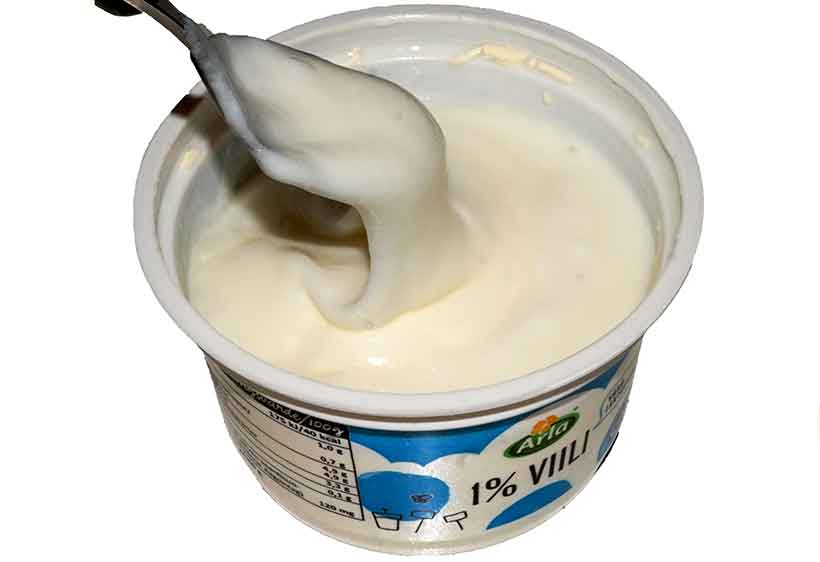
Viili is a Scandinavian fermented dairy food that is particularly popular in Finland and Sweden.
Similar to kefir, viili is made by mixing a mesophilic culture into milk and allowing it to ferment at room temperature.
Once fermented, viili develops a thick yogurt-like consistency and provides the same potential probiotic benefits as other fermented dairy foods.
Based on data from Open Food Facts, here are the typical nutritional values for a 200g container of viili (43).
| Nutrient | Amount | % Daily Value |
|---|---|---|
| Calories | 124 kcal | |
| Carbohydrates | 8 g | 3% |
| Fiber | 0 g | 0% |
| Sugars | 8 g | |
| Fat | 7 g | 9% |
| Saturated Fat | 4.2 g | 21% |
| Protein | 6 g | 12% |
| Cholesterol | — | — |
| Sodium | 64 mg | 3% |
21. Ymer
Category: Fermented dairy foods
Ymer is a soured milk dairy product from Denmark.
To make ymer, producers add a lactic acid bacterial culture (Lactococcus lactis) to whole milk and leave it to ferment.
After fermentation, the liquid whey portion of ymer is drained away, which removes water and some sugars and minerals. This leads to ymer developing a thicker texture and increased protein content (44).
Ymer has a tart flavor and a thick consistency similar to mousse.
Based on data from the National Food Institute with the Technical University of Denmark, here are the nutrients in ymer per 100 grams (45):
| Nutrient | Amount | % Daily Value |
|---|---|---|
| Calories | 72 kcal | |
| Carbohydrates | 4.1 g | 1% |
| Fiber | 0 g | 0% |
| Sugars | 3.37 g | |
| Fat | 3.36 g | 4% |
| Saturated Fat | 2.34 g | 12% |
| Protein | 6.1 g | 12% |
| Cholesterol | 14 mg | 5% |
| Sodium | 46.8 mg | 2% |
22. Yogurt
Category: Fermented dairy foods
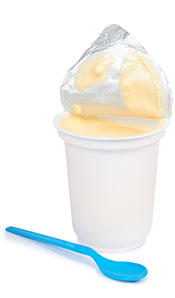
Yogurt is among the most popular dairy products, and its production first involves heating milk to denature its proteins.
Following this, producers add bacterial cultures known as “yogurt cultures” (Lactobacillus and Streptococcus) to the milk and leave it to ferment at a warm temperature (46).
The more extended the fermentation period, the sourer the yogurt will be.
Yogurt has been the focus of a wide variety of studies and is thought to have several potential health benefits. For example, several large systematic reviews and meta-analyses have found a link between yogurt intake and a decreased risk of chronic diseases like cardiovascular disease and cancer (47, 48, 49, 50).
The exact nutritional composition of yogurt will depend on its milkfat content and any additional ingredients present.
However, here is the nutrition profile of whole milk yogurt per 245-gram cup serving (51):
| Nutrient | Amount | % Daily Value |
|---|---|---|
| Calories | 149 kcal | |
| Carbohydrates | 11.4 g | 4% |
| Fiber | 0 g | 0% |
| Sugars | 11.4 g | |
| Fat | 7.96 g | 10% |
| Saturated Fat | 5.14 g | 26% |
| Protein | 8.5 g | 17% |
| Cholesterol | 31.8 mg | 11% |
| Sodium | 113 mg | 5% |
Also, it is worth noting that Greek yogurt is a little different from regular yogurt. This dairy product has a thicker and creamier texture and contains more protein and less lactose than regular yogurt.
Learn more: Greek Yogurt 101: Nutrition Facts and Health Benefits
There are also a wide range of ‘protein yogurts’ produced to have a high protein content. These options are typically made with non-fat milk and sometimes further enhanced with protein powders.
Learn more: The Benefits of Protein Yogurt (and Its Nutritional Values)
23. Zincica
Category: Fermented dairy foods
It would be easy to call Zincica the Slovakian version of kefir.
First of all, Zincica shares several traits with kefir, with the main difference being the type of milk.
To make Zincica, sheep’s milk is fermented with a variety of lactic acid bacterial cultures.
After fermentation, people consume it as a drink.
Per 100 ml, Zincica provides the following nutrients (52):
| Nutrient | Amount | % Daily Value |
|---|---|---|
| Calories | 40 kcal | |
| Carbohydrates | 4.8 g | 2% |
| Fiber | 0 g | 0% |
| Sugars | 3.6 g | |
| Fat | 1.1 g | 1% |
| Saturated Fat | 0.95 g | 5% |
| Protein | 2.7 g | 5% |
| Cholesterol | 5 mg | 2% |
| Sodium | 40 mg | 2% |
Frozen Dairy Products
24. Gelato
Category: Frozen dairy products
Gelato is an Italian frozen dessert made with cream, sugar, milk, and often contains added ingredients for flavor, such as chocolate, fruit, and nuts.
Although gelato is a variety of ice-cream, there are some key distinctions that make it unique. These include a higher proportion of milk and lower proportion of cream, as well as being produced using a lower speed churning process, resulting in a smoother, softer texture as the gelato incorporates less air (53).
Due to its thicker texture, gelato tends to contain more fat and total calories than regular ice-cream.
Here are the typical nutritional values for a 160-gram scoop of chocolate-flavored gelato (54):
| Nutrient | Amount | % Daily Value |
|---|---|---|
| Calories | 402 kcal | |
| Carbohydrates | 31.7 g | 12% |
| Fiber | 1.44 g | 5% |
| Sugars | 27.8 g | |
| Fat | 27.2 g | 35% |
| Saturated Fat | 16.6 g | 83% |
| Protein | 7.55 g | 15% |
| Cholesterol | 96 mg | 32% |
| Sodium | 91.2 mg | 4% |
25. Ice-cream
Category: Frozen dairy products
Ice-cream is a traditional and very popular dessert made from frozen cream and milk. This dairy base is combined with sugar and flavors such as vanilla, chocolate, and different varieties of fruit.
Since ice-cream contains more air than gelato, it has a lower fat and calorie content.
Here are the nutritional properties of chocolate-flavored ice-cream per 120-gram scoop (55):
| Nutrient | Amount | % Daily Value |
|---|---|---|
| Calories | 259 kcal | |
| Carbohydrates | 33.8 g | 12% |
| Fiber | 1.44 g | 5% |
| Sugars | 30.5 g | |
| Fat | 13.2 g | 17% |
| Saturated Fat | 8.16 g | 41% |
| Protein | 4.56 g | 9% |
| Cholesterol | 40.8 mg | 14% |
| Sodium | 91.2 mg | 4% |
Milk
26. Milk
Category: Liquid products
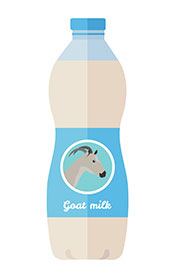
There are numerous milk varieties available, ranging from regular cow’s milk to goat milk and reduced-fat options.
Each type has its own distinct taste and nutritional content, so the the “best” choice depends on individual taste and dietary preferences.
For more detailed information, refer to our guide on 24 different types of milk.
Here are the basic nutritional properties of whole milk per 244-gram (1 cup) serving (56):
| Nutrient | Amount | % Daily Value |
|---|---|---|
| Calories | 149 kcal | |
| Carbohydrates | 11.7 g | 4% |
| Fiber | 0 g | 0% |
| Sugars | 12.3 g | |
| Fat | 7.93 g | 10% |
| Saturated Fat | 4.54 g | 23% |
| Protein | 7.69 g | 15% |
| Cholesterol | 24.4 mg | 8% |
| Sodium | 105 mg | 5% |
Learn more: 24 Types of Milk and Their Nutritional Values
Specialty Dairy Foods
27. Protein Puddings
Category: Specialty dairy products
Over the past several years, numerous ‘protein pudding’ brands have appeared on store shelves.
Protein puddings are high-protein dairy products typically made from skimmed milk, milk protein, thickeners, flavorings, and sweeteners. They offer a protein-rich snack option with relatively few calories.
The products are available in various flavors, such as chocolate and vanilla, and are aimed at busy people and gym-goers looking for a convenient, on-the-go snack. They tend to come in single-serve containers.
Based on data from Nutritionix, a typical protein pudding weighing 128 grams provides the following nutritional values (57):
| Nutrient | Amount | % Daily Value |
|---|---|---|
| Calories | 106 kcal | |
| Carbohydrates | 1.6 g | 1% |
| Fiber | 0.8 g | 3% |
| Sugars | 0 g | |
| Fat | 2.4 g | 3% |
| Saturated Fat | 0.3 g | 2% |
| Protein | 20.0 g | 40% |
| Cholesterol | 4 mg | 1% |
| Sodium | 43 mg | 2% DV |
Common Questions
Here are the answers to some common further questions about dairy foods.
No, eggs are not dairy. Dairy products are foods made from milk.
Milk typically contains about 5% lactose by weight, but more processed dairy products like cheese, butter, and whey protein contain much less. Regarding cheese, bacteria ferment the lactose into lactic acid during the fermentation process. Butter is an almost pure source of dairy fat, and the fat content has been separated from carbohydrates (lactose) and protein. Whey protein is a concentrated dairy protein, and much of the carbohydrate (lactose) and fat has been removed. Dairy products like yogurt, quark, kefir, sour cream and other fermented products also contain less lactose than milk.
It is possible to see online claims that dairy causes inflammation. However, there is no robust evidence to support this assertion. Several large systematic reviews have looked into this topic and found little evidence for dairy having an inflammatory effect. In fact, these reviews demonstrated a neutral to beneficial effect of dairy on markers of inflammation (58, 59, 60, 61). However, not all dairy is equal in terms of its nutritient provision and potential health effects — research tends to favor dairy options like cheese, milk, and yogurt over isolated fats like butter and ghee.
Final Thoughts
There are many exciting dairy products available around the world, each with their own distinct characteristics and nutritional properties.
Most provide a range of beneficial nutrients and provide an enjoyable taste too.
Related Articles


